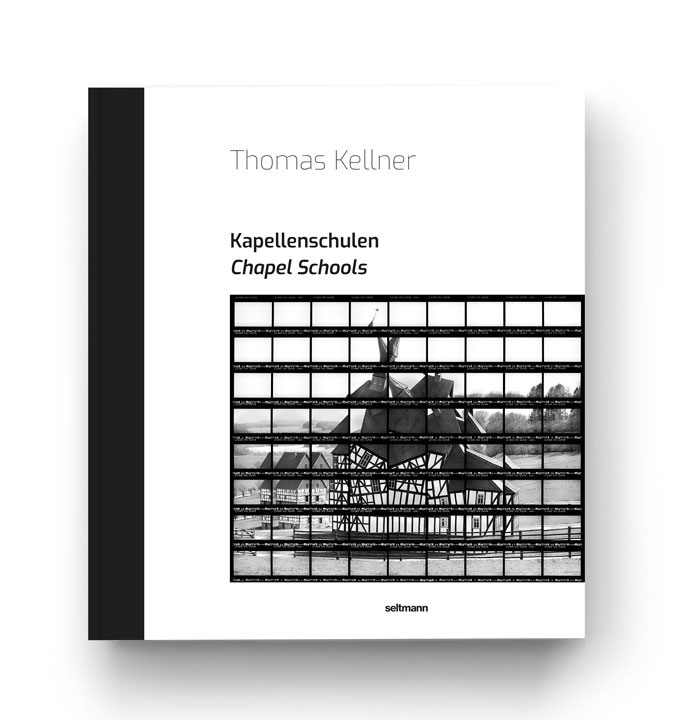Chapel Schools. In the footsteps of the Nassau Counts William I and John VI
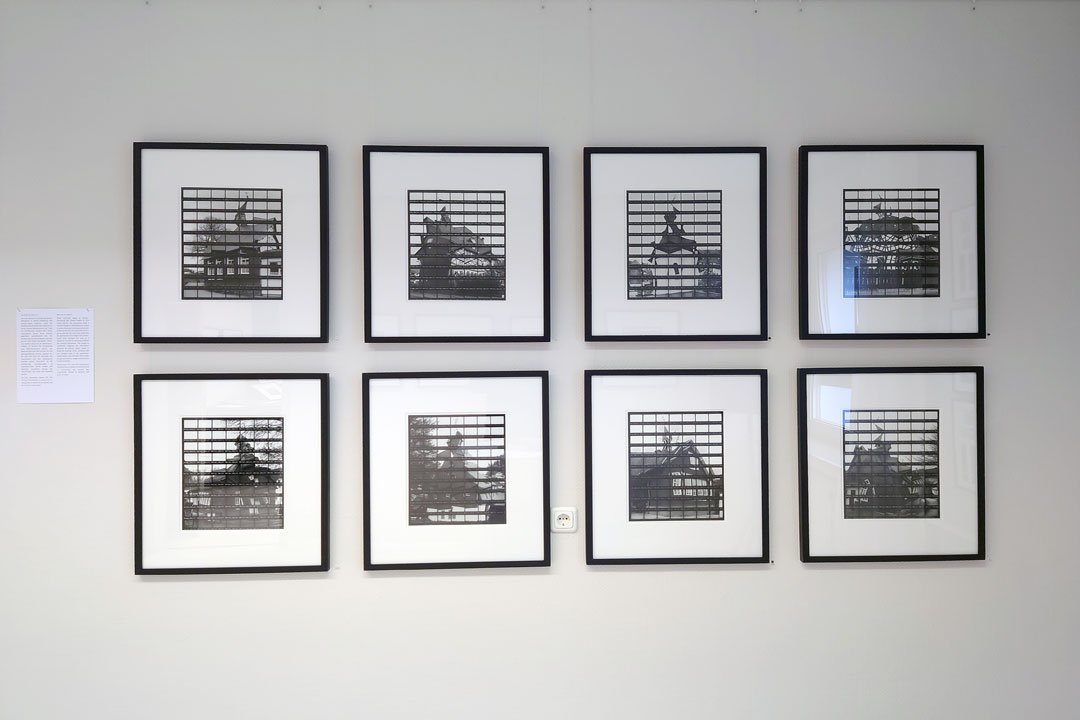
Chapel Schools. A Captivating Exploration of Educational Institution and their Historical Significance
In 49 photographs, the artist, oscillating between art and documentation, thematizes a part of our regional history. The chapel schools form a solitary architectural type for the Siegerland and neighboring regions. As individual buildings, conspicuous in their surroundings, they reveal the connection between church and state, starting from the domain of Count Wilhelm von Nassau-Dillenburg (* April 10, 1487 in Dillenburg; †October 6, 1559 ibid.).
Architectural Evolution Unveiled: Kellner's Artistic Exploration of Siegen's Industrial Culture and Chapel Schools
After Kellner has already devoted himself to the Siegen industrial culture in the form of industrial architecture in his series of works Genius Loci and has dealt with the half-timbered houses of the Siegen industrial area in the footsteps of Bernd and Hilla Becher, the chapel schools complement his artistic processing of the regional architectural landscape. The chapel schools were realized in Kellner's typical cubist-deconstructed style, which was described by Prof. Dr. Irina Chmyreva as Visual Analytical Synthesis, or by Prof. Dr. Rolf Sachsse as Modern Mannerism and sets the motif visually in motion.
Chapel Schools: Uniting Education and Worship in Historic Half-Timbered Buildings
Chapel schools are buildings in which both church services and educational lessons were held and therefore reflect the close connection between church and state. The initiator was Count Wilhelm von Nassau-Dillenburg, who in 1532 instructed the pastors to teach the seven- to fourteen-year-old children at a central location on holiday afternoons. This concept was expanded so that eventually a chapel school was established in almost every village. Alma Mater and worship space were thus combined in one building, but the rooms could also be used for other purposes. Thus, the chapel school was a multifunctional building, which was used until the end of the 19th century and in parts even until the 20th century. Typical is its appearance, a half-timbered building, often slated and often provided with a small turret for the bell.
Grants Empowering Artistic Innovation and Exhibition Success
The project was supported during research and implementation by grants from the Ministry of Culture and Science of the State of North Rhine-Westphalia and Neustart Kultur of the Federal Government Commissioner for Culture and the Media through the Stiftung Kulturwerk of VG Bild-Kunst. The final realization of the analog images via scans and prints to the exhibition with catalog would not have been possible without the grants from the district of Siegen-Wittgenstein, BGH Edelstahlwerke GmbH and VETTER Industrie GmbH, EJOT and Dr. Hubertus Koch.
Kellner's Chapel Schools Reviewed
"Kellner's technique gives the static architectural shots a dynamism that points beyond the documentary. The viewer's gaze lingers on details, questioning the familiar and the seemingly catchy. Kellner's pictorial works prevent hasty glances and categorizations." Cantauw, Christiane. 2023. “Ungewohnte Sicht Auf Siegerländer Kapellenschulen.” Accessed February 20, 2023. https://web.archive.org/web/20230220085532/https://www.alltagskultur.lwl.org/de/blog/siegerlaender-kapellenschulen/.
Chapel Schools of the Siegerland and Neighboring Countries
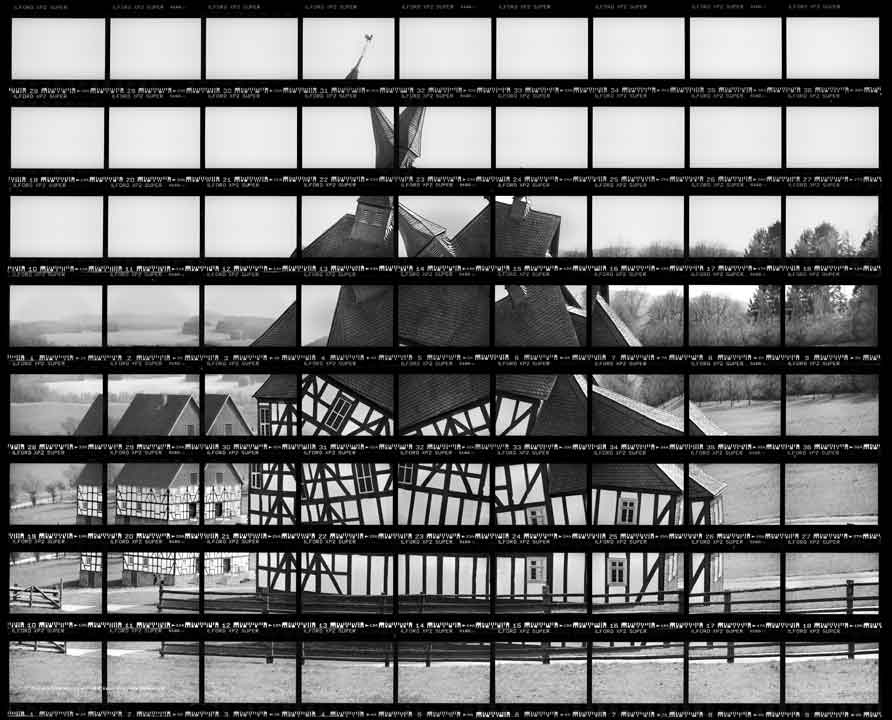
Chapel schools
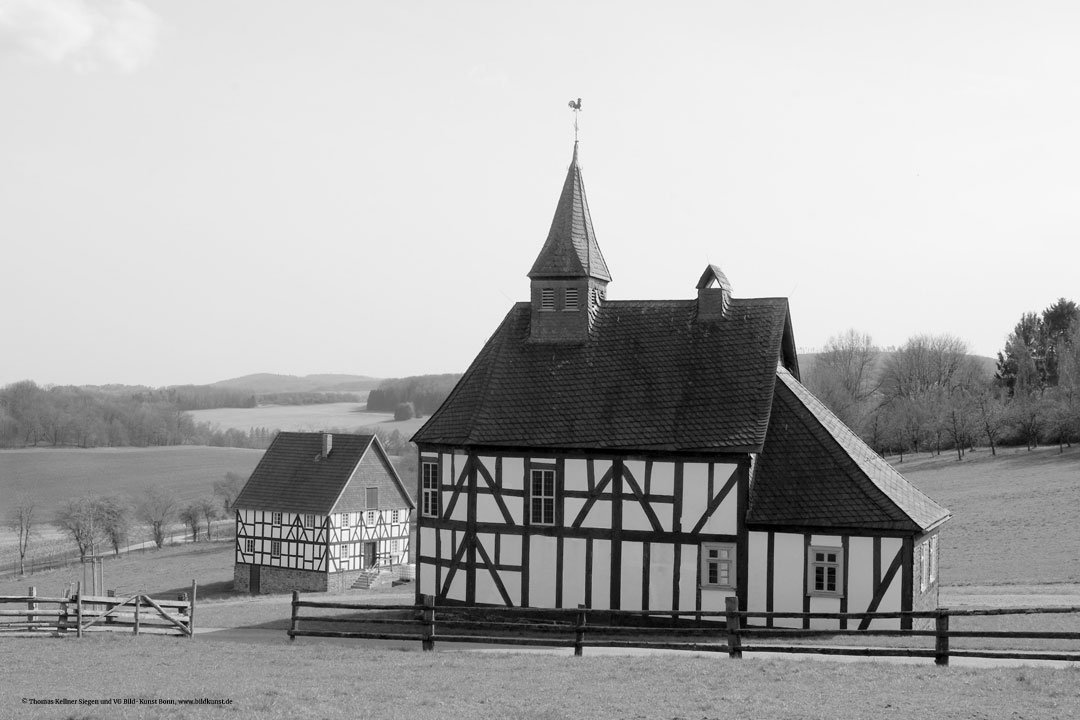
The chapel schools represent a unique type of architecture that reveals the connection between religion and public education. As a result, both religious services and school instruction were combined in one building, which qualifies the chapel schools as multi-purpose buildings. The term “chapel school” resulted from the integration of a school into an already existing chapel. These chapel schools were mainly set up in the Siegerland and the neighboring areas because of geographical and political connections. The objective of the artist’s confrontation with the chapel schools is to preserve and commemorate this typically regional cultural asset through a new medium. As it is currently, a lack of historical knowledge and interest has led to the sale, demolition, or remodeling of many run-down chapel schools in the post-World War II era. Thomas Keller dedicated 49 images to the regional and cultural-historical subject of chapel schools.
The architectural presentation
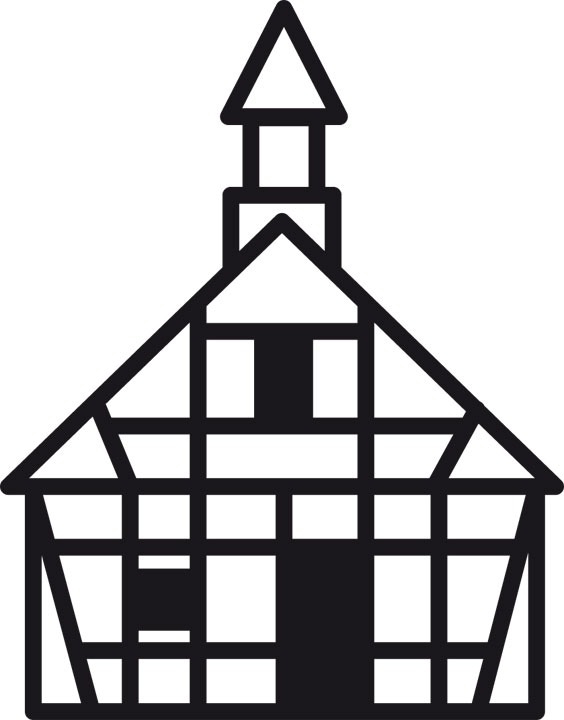
The multiple purposes of the chapel schools are rooted architecturally and are evident in a building type that alternates between the secular and the religious. The appearances of the chapel schools were not related to religion. They do not indicate any religious affiliation be it through the facade, the way the building was constructed, or the layout of the rooms. The buildings impress mainly through their functional design. Only a ridge turret with a bell, a polygon-shaped choir space in some buildings and the interior design, which at least allows conclusions about the religious denomination, indicate their religious use. The chapel school has been a multi-purpose space for the community beyond school and religious uses that continues to this day. Indeed, it was precisely the proximity of the chapel schools to upper class homes that favored separation from the religious context and allowed for a change in use once the buildings had become too small for school instruction.
Counts William I and John VI
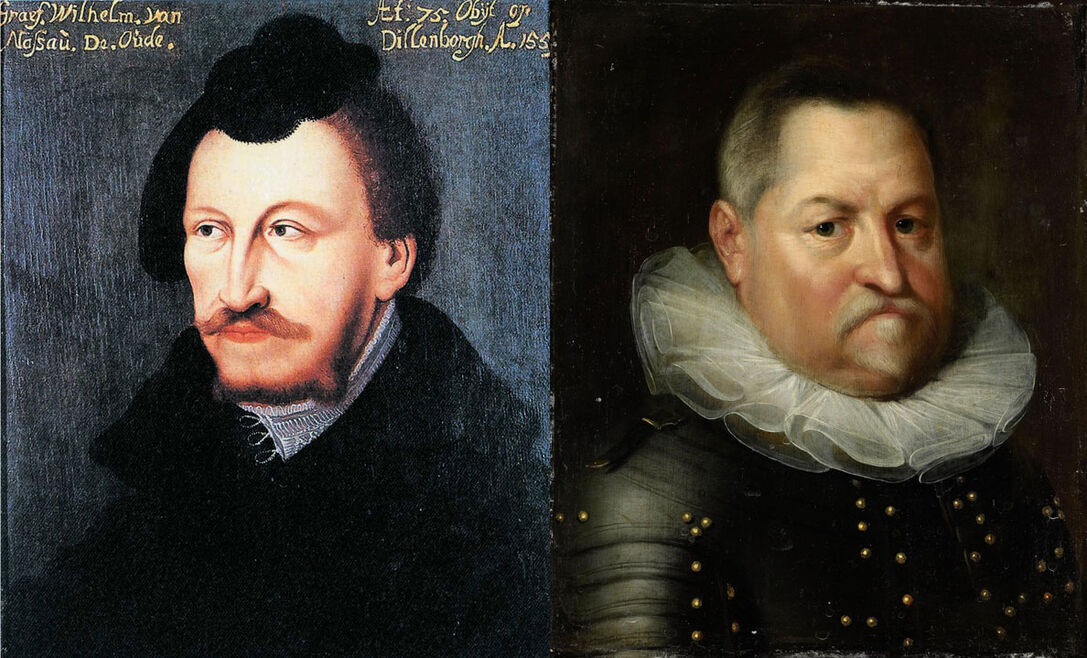
Count William I, known as William the Rich, and his son John VI, or John the Elder, are seen as the pioneers of the chapel schools. Wilhelm, who had witnessed Luther’s refusal to recant his theses and writings at the Diet of Worms in 1521, paved the way for the Protestant faith in his dominions. While William had introduced measures against the sale of indulgences as early as 1518. It was not until the Brandenburg-Nuremberg Church Order in 1534 that the Lutheran Reformation took effect in his territories.
In 1578, his son, John VI, introduced Calvinism in Nassau-Dillenburg and Nassau-Siegen. During his reign, faith and education gained a special importance, so that John has been considered a benefactor of schools and in this respect, of chapel schools starting in 1567. The resulting comprehensive establishment of schools with instruction for both boys and girls together with the increasing teaching standards were parts of the driving force to achieve literacy.
The role of religion
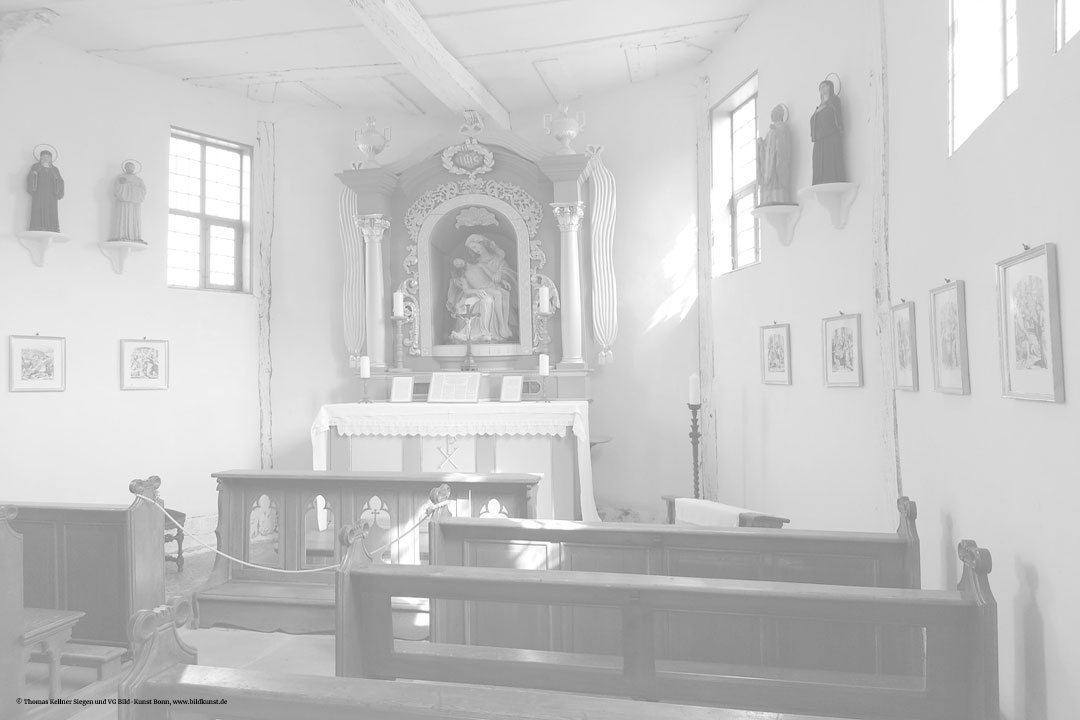
When Calvinism began in Nassau-Dillenburg and Nassau-Siegen in 1578 under John VI, the population faced a second change in denominations within 44 years. Elements of the population were critical of the new rite associated with it, yet in principle the move was made with the agreement of the Siegen City Council. Count John emerged not only as a supporter, but also as the pioneer behind the Calvinist movement. The change in confession triggered the educational offensive by John VI, which aimed to bring the theology of the catechism and the Calvinist faith to the population. Undoubtedly, boys and girls were taught to read and write in chapel schools based on the catechism.
Beginning in 1624, John VIII attempted to reconvert the territories he had inherited to Catholicism. His success was nevertheless limited to Netphen and parts of Siegen.
Kellner’s Chapel Schools
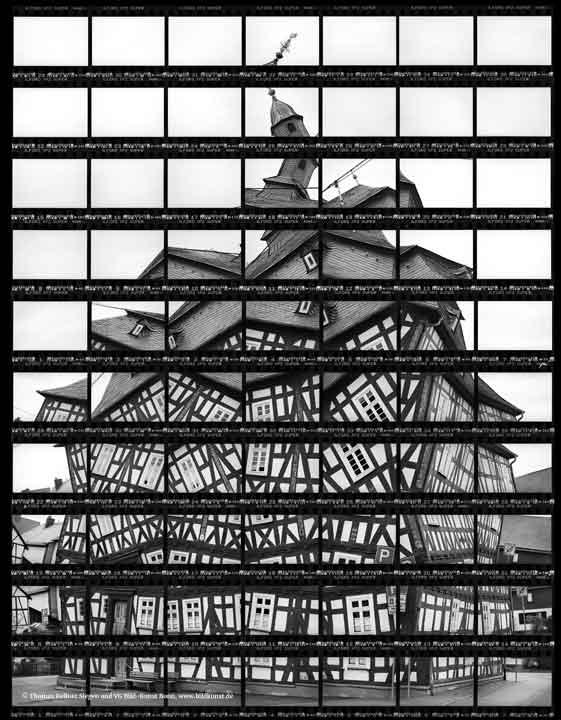
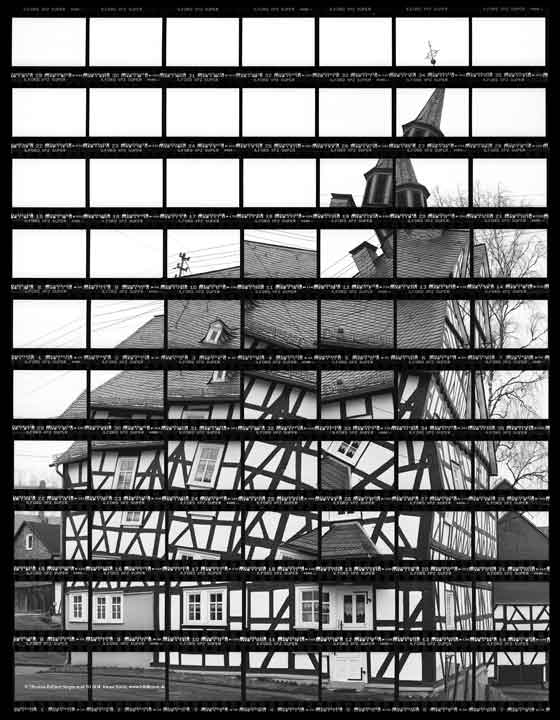
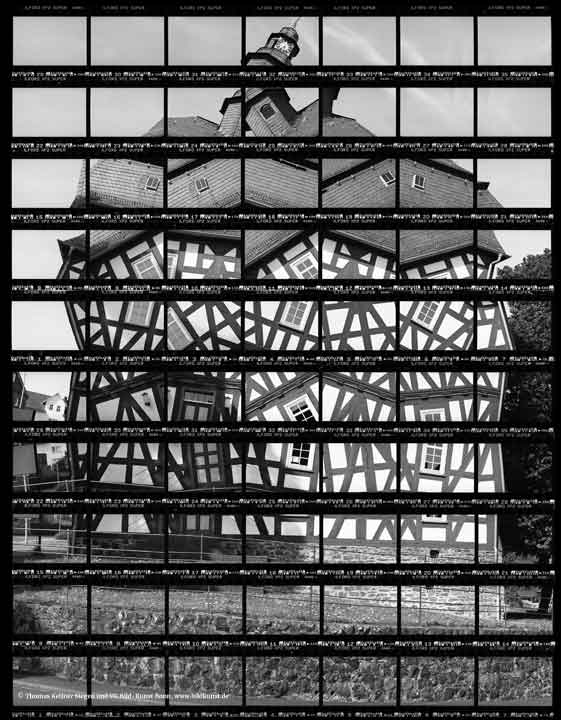
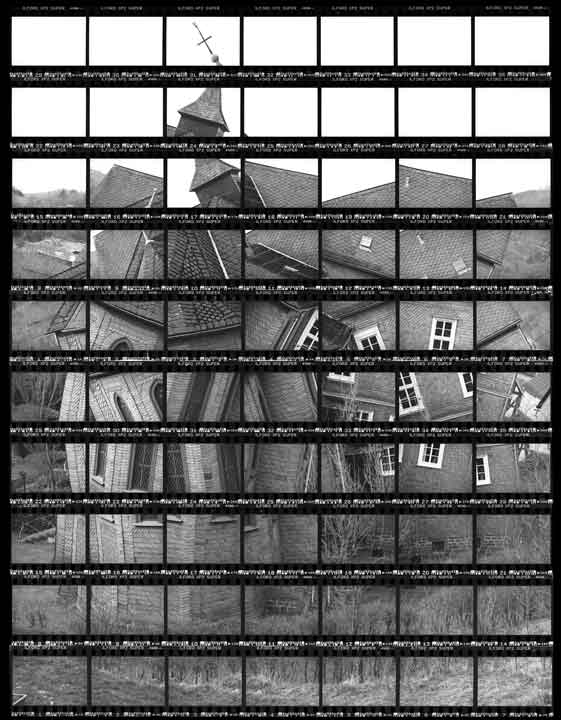
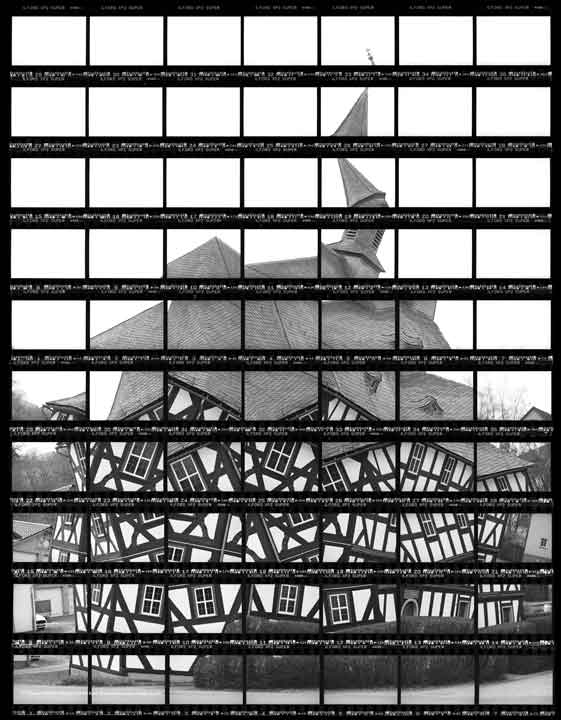
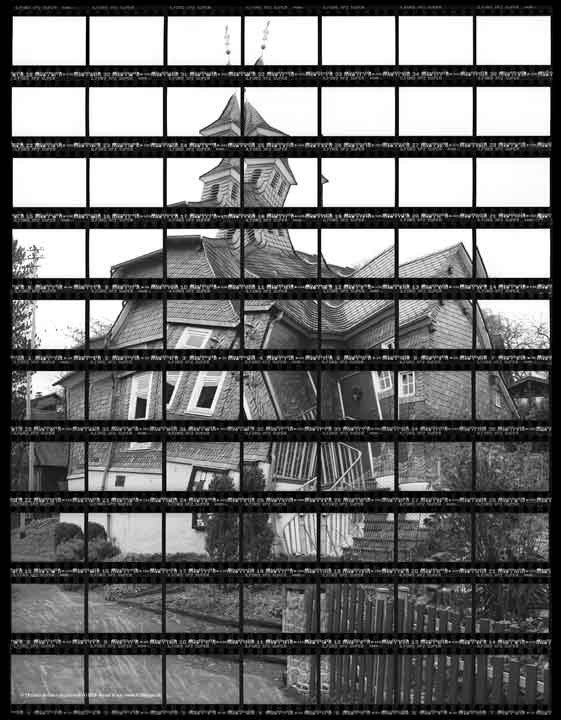
By transferring the cultural asset of the chapel school to an artistic framework and context by means of the photographic medium, he lends a new dimension to contemporary art in what is in many respects a historical subject. Technically, he follows up on the elementary architectural structures of the chapel schools and their multi-purpose use, embodied by religion and school education. The contact sheet grid used by Thomas is found in the open timber framework or the slate cladding of the facades. The various tilted elements in the composition fit in with the multifunctional uses of the spaces. Above all, the multiple perspectives reflect the interrelationship between religious and educational purposes.
The view of the past may only be seen from the perspective of the present. The artist uses his photo-artistic position to accomplish this, thus succeeding in rethinking the view of the chapel schools while remaining true to his artistic past.
Author of the Siegerland Chapel schools
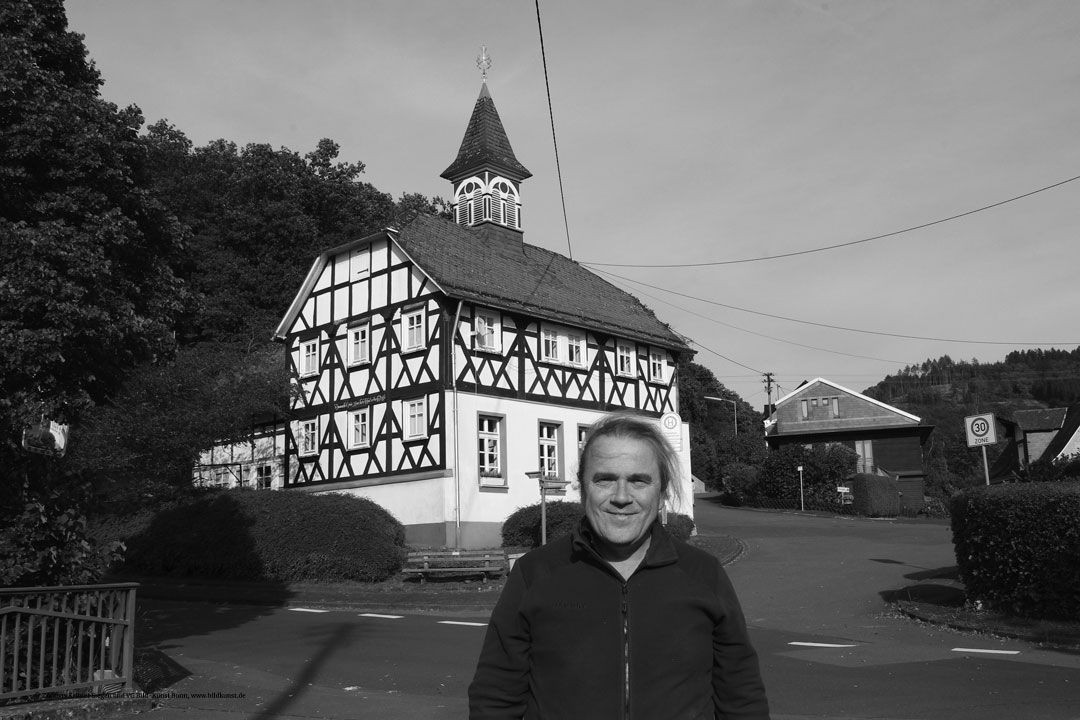
Thomas Kellner was born in Bonn in 1966. He studied art, sociology, politics, and economics at the University of Siegen. In 1996, his series of pinhole camera photographs Deutschland — Blick nach draussen [Germany: Looking Outside] won him the Kodak Young Talent Award, which encouraged him to pursue a career as a fine art photographer. Since then, Thomas has lived and worked as an artist and curator of photographic exhibition projects in Siegen. His work has been presented in solo exhibitions worldwide including Germany, Australia, England, Russia, China, France, Iceland, Poland, Denmark, Brazil, Syria, Spain, and the United States since 1993 along with numerous group exhibitions and publications. Thomas’ work is included in major public and private collections, such as the Art Institute of Chicago, the Museum of Fine Arts in Houston, the Museu de Arte Moderna in Rio de Janeiro, the Baltimore Museum of Art, the Fox Talbot Museum at Lacock Abbey, and the George Eastman Museum in Rochester. In 2003 he was appointed to the German Society for Photography (DGPh).
Exhibitions of the Chapel Schools
Kunst fuer Chemnitz, Chemnitz, Germany
January 18 – February 24, 2024
Scholl-Stiftung im Kunstraum Grevy
November 10-24, 2023
Artgalerie, Siegen
November 13, 2022 – February 11, 2023
Chapel School book
A bilingual catalog with 208 pages has been published by Seltmann publishers, Berlin, with text contributions by Chiara Manon Bohn, Isabell Eberling M. Sc., Dr. Andrea Gnam and Dr. Stefanie Siedek-Strunk. It can be ordered from the publisher or the shop.
Publications of the new work
Monographs
Seltmann, Oliver, ed. 2022. Thomas Kellner – Kapellenschulen: Auf Den Spuren Der Nassauischen Grafen Wilhelm I. Und Johann VI. Berlin: Seltmann Publishers.
Magazines
Heider, Melanie. 2022. “Regionalgeschichte Für Die Zukunft Erhalten.” Top Magazin Siegen Wittgenstein 17 (4): 10–11.
Zorn, Elmar. 2022. “Thomas Kellner: Kapellenschulen. Solitäre Architektur Als Historische Verbindung Zwischen Kirche Und Staat: Ausstellung in Der Artgalerie in Siegen Bis Zum 10. Februar.” Art Profil 28 (150): p.16–17.
Articles in newspapers
Siegener Zeitung. 2022. “Thomas Kellner Und Die Kapellenschulen.” Siegener Zeitung, November 15. 265.
Siegener Zeitung. 2022. “Fachwerk, Kapellenschulen, Portraits: Thomas Kellner Setzt Fotografische Themen in Der Region: Bechers Und Sander Neu Interpretiert.” Siegener Zeitung, January 6. p.4.
Williams, Axel. 2023. “Türmchentanz Mit Relevanz: Foto-Künstler Thomas Kellner Lernte Die Heimat Bei Seinem Projekt „Kapellenschulen“ Neu Kennen.” Siegerländer Wochen-Anzeiger, January 21. SWA.
TV
Rebbert, Anke. 2021. “Das Besondere Im Vertrauten – Der Fotograf Thomas Kellner.” Westdeutscher Rundfunk. October 23, 2021. Westart.
Radio
Rebbert, Anke. 2021. “Unterwegs Mit Thomas Kellner.” Westdeutscher Rundfunk. November 3, 2021. WDR3 Mosaik.
Online
Cantauw, Christiane. 2023. “Ungewohnte Sicht Auf Siegerländer Kapellenschulen.” Accessed February 20, 2023. web.archive.org/web/20230220085532/https://www.alltagskultur.lwl.org/de/blog/siegerlaender-kapellenschulen/.
Siegener Zeitung. 2022. “Fachwerk, Kapellenschulen, Portraits: Thomas Kellner Fotografiert in Der Region.” web.archive.org/web/20220106154629/https://www.siegener-zeitung.de/siegen/c-kultur/thomas-kellner-fotografiert-in-der-region_a260876.
Wolf, Thomas. 2022. “Ausstellung: Thomas Kellner Kapellenschulen.” Accessed November 15, 2022. web.archive.org/web/20221115130924/https://www.siwiarchiv.de/ausstellung-thomas-kellner-kapellenschulen/.
Thank you for support
The project was supported during research and realization by grants from the Ministry of Culture and Science of the State of North Rhine-Westphalia and Neustart Kultur of the Federal Government Commissioner for Culture and the Media by the Stiftung Kulturwerk of VG Bild-Kunst.

Where to find the Chapel Schools
- Chapel School Afholderbach, Erndtebrücker Strasse 19, DE 57250 Netphen, North Rhine-Westphalia, Germany
- Chapel School Alertshausen, Dorfstrasse 10, DE 57319 Bad Berleburg, North Rhine-Westphalia, Germany
- Chapel School Arborn, Knotenstrasse 25, DE 35753 Greifenstein, Hesse, Germany
- Chapel School Beienbach, Schnellenbergstrasse 3, DE 57250 Netphen, North Rhine-Westphalia, Germany
- Chapel School Bellersdorf, Wetzlarer Strasse 12, DE 35756 Mittenaar, Hesse, Germany
- Chapel School Birkefehl, Unterdorfstrasse 2, DE 57339 Erndtebrück, North Rhine-Westphalia, Germany
- Chapel School Breitenbach, Breitenbacher Strasse 377, DE 57074 Siegen, North Rhine-Westphalia, Germany
- Chapel School Breitenbach (Ehringshausen), Hinterstrasse 1, DE 35630 Ehringshausen, Hesse, Germany
- Chapel School Dotzlar, Burgstrasse 6, DE 57319 Bad Berleburg, North Rhine-Westphalia, Germany
- Joseph's Chapel Eckmannshausen, Unglinghausener Strasse 2, DE 57250 Netphen, North Rhine-Westphalia, Germany
- Chapel School Eisern, Eiserntalstrasse 497, DE 57080 Siegen, North Rhine-Westphalia, Germany
- Chapel School Fellerdilln, Brunnenstrasse 2, DE 35708 Haiger, Hesse, Germany
- Chapel School Feuersbach, Deuzer Strasse 240, DE 57074 Siegen, North Rhine-Westphalia, Germany
- Chapel School Flammersbach, Flammersbacher Strasse 31, DE 57234 Wilnsdorf, North Rhine-Westphalia, Germany
- Chapel School Grissenbach, In der Hälsbach 2, DE 57250 Netphen, North Rhine-Westphalia, Germany
- Chapel School Grund, Jung-Stilling-Strasse 11 a, DE 57271 Hilchenbach, North Rhine-Westphalia, Germany
- Chapel School Helberhausen, Ferndorfstrasse 172, DE 57271 Hilchenbach, North Rhine-Westphalia, Germany
- Chapel School Hemschlar, Neue Strasse 15 a, DE 57319 Bad Berleburg, North Rhine-Westphalia, Germany
- Chapel School Hesselbach, Zum Spreit 4, DE 57334 Bad Laasphe, North Rhine-Westphalia, Germany
- Chapel School Hohenroth, Zum Höllberg 14, DE 35759 Driedorf, Hesse, Germany
- Chapel School Kredenbach, Kredenbacher Strasse 29, DE 57223 Kreuztal, North Rhine-Westphalia, Germany
- Chapel School Laaspherhuette, Zum Kalkberg 5-3, DE 57334 Bad Laasphe, North Rhine-Westphalia, Germany
- Chapel School Lippe, Hofgartenstrasse 2, DE 57299 Burbach, North Rhine-Westphalia, Germany
- Chapel School Littfeld, Hagener Strasse 428, DE 57223 Kreuztal, North Rhine-Westphalia, Germany
- St. Barbara's Chapel Nenkersdorf, Buchenweg 1, DE 57250 Netphen, North Rhine-Westphalia, Germany
- St. Peter's Chapel Netphen, Frohnhausener Strasse 13 a, DE 57250 Netphen, North Rhine-Westphalia, Germany
- Chapel School Oberdielfen, Oranienstrasse 4, DE 57234 Wilnsdorf, North Rhine-Westphalia, Germany
- Chapel School Oberschelden, Vor der Hohler 12, DE 57080 Siegen, North Rhine-Westphalia, Germany
- Chapel School Obersetzen, Löhstrasse 5, DE 57078 Siegen, North Rhine-Westphalia, Germany
- Chapel School Odersberg, Weilburger Strasse 11, DE 35753 Greifenstein, Hesse, Germany
- Chapel School Plittershagen, Am Hofacker 25, DE 57258 Freudenberg, North Rhine-Westphalia, Germany
- Chapel School Rehe, Hauptstrasse 15, DE 56479 Rehe, Rhineland-Palatinate, Germany
- Chapel School Richstein, Richsteiner Strasse 24, DE 57319 Bad Berleburg, North Rhine-Westphalia, Germany
- Chapel School Rinsdorf, Im Giessenbach 26, DE 57234 Wilnsdorf, North Rhine-Westphalia, Germany
- Chapel School Rodenroth, Brunnenstrasse 1, DE 35753 Greifenstein, Hesse, Germany
- Chapel School Ruckersfeld, Am Oberrain 3, DE 57271 Hilchenbach, North Rhine-Westphalia, Germany
- Chapel School Sassenhausen, Kapellenstrasse, DE 57319 Bad Berleburg, North Rhine-Westphalia, Germany
- Chapel School Schwarzenau, Am Kohlrücken 4, DE 57319 Bad Berleburg, North Rhine-Westphalia, Germany
- Chapel School Buchen-Sohlbach, Im Gensterfeld 16, DE 57078 Siegen, North Rhine-Westphalia, Germany
- Chapel School Tringenstein, Oranienstrasse 28, DE 35768 Siegbach, Hesse, Germany
- Chapel School Trupbach, Trupbacher Strasse 40, DE 57072 Siegen, North Rhine-Westphalia, Germany
- Chapel School Volnsberg, Quellenweg 16, DE 57074 Siegen, North Rhine-Westphalia, Germany
- Chapel School Wahlbach, Triftstrasse 6, DE 57299 Burbach, North Rhine-Westphalia, Germany
- Chapel School Waigandshain, Hauptstrasse 18, DE 56477 Waigandshain, Rhineland-Palatinate, Germany
- Chapel School Werthenbach, Krummes Haus, LWL Freilichtmuseum, DE 32760 Detmold, North Rhine-Westphalia, Germany
- Chapel School Wiederstein, Flurstrasse 10, DE 57290 Neunkirchen, North Rhine-Westphalia, Germany
- Chapel School Wingeshausen, Kirchplatz 1, DE 57319 Bad Berleburg, North Rhine-Westphalia, Germany
- Chapel School Wunderthausen, Hallenberger Strasse 22, DE 57319 Bad Berleburg, North Rhine-Westphalia, Germany
- Chapel School Zinse, Grosse Mittel 15, DE 57339 Erndtebrück, North Rhine-Westphalia, Germany
